About Minitec
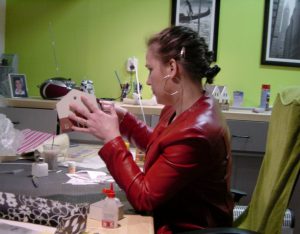
Minitec is a model building firm, that I - Lucienne Bulthuis - started in 2007 and that is based in Wassenaar, a coastal town near The Hague. Until then, I worked for 11 years as the only model maker / designer at a medium-sized architectural firm, which designed exclusively for one of our country's largest project developers. From the sidelines I learned all about real estate and the architectural industry. The creative way of working and thinking within Minitec is based upon this work experience, as well as on my completed architectural study at the Faculty of Architecture of the TU Delft. These are also the aspects, that distinguish me from most other model builders. Below you can read more about my way of working and the models I make. If you want to know more about me and how I became a model maker, you can go to the About me page.
One-(wo)man business
Minitec was founded as a one-man business and it still is. Does this have any disadvantages? Yes, but they certainly don’t outweigh the benefits. Of course, I sometimes miss the contact with colleagues. My self-criticism can be quite ruthless sometimes and then there is no one around, to put things into perspective. On the other hand, when you work alone, you are less distracted and your creations never become some kind of compromise between different visions and styles. Having staff often involves an enormous amount of administration, which would leave me less time for the work I'd rather do, namely model making.
Another big advantage is, that with a one-man business the communication is to the point and accurate, which reduces the risk of communication problems and also ensures, that the client's wishes will actually be implemented into the model.
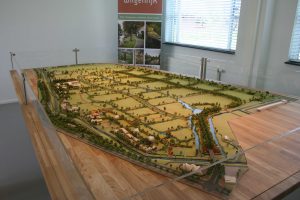
Due to Minitec's small scale, my models are also affordable, while my work is certainly no less of quality than that of larger studios, on the contrary actually. Being the owner and the only model maker of Minitec, I am directly responsible for every model, that goes out here, and while making them I am always striving for perfection, to get enough satisfaction from my job.
When outsourcing parts of a large model to other companies, I make sure that these are not the elements, that determine the appearance of a model, so my style remains recognizable. For a large project, I did in the recent past, the table and cabinet underneath were made by a furniture maker and the MDF bottoms as well. The acrylic for the water was CNC milled by another company. For all the outsourced work I made the digital drawings, so that everything would match. I also made the islands and did the finishing touch of them with the grass and greenery. Last but not least I sawed and sanded the wooden houses and buildings of the environment, using the photographs I took myself.
How my models distinguish themselves
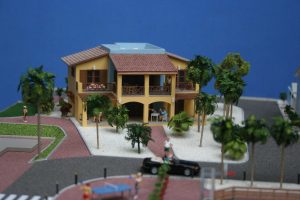
When making detailed architectural models (with or without environment) I emphasize the positive aspects of both the project and the environment and make sure that the negative ones are less noticeable. This requires creativity, handiness, a sharp eye for detail, a good feeling for materials and colors, but above all, many years of experience. Only then you can make the right choice between what you show and what you leave.
I still build in a traditional way, not using a 3D printer to build the complete model. I use electric tools and also own a computer-controlled milling machine for certain components such as façades. However, my knife is still the most important tool within the production process. Due tot this partly manual way of working, my models lack the hard and sterile appearance, often associated with digital and mechanical work, and the choice of materials is virtually unlimited. 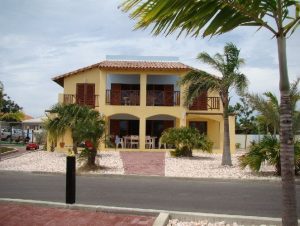 The combination of multiple materials makes my models more lively than those made with a 3D printer, consisting of just one material: plastic or even worse starch. When wood is used in reality and the scale of the model allows it, it will also be used in my model instead of spray-painted plastic, as you so often see in models from other model makers.
The combination of multiple materials makes my models more lively than those made with a 3D printer, consisting of just one material: plastic or even worse starch. When wood is used in reality and the scale of the model allows it, it will also be used in my model instead of spray-painted plastic, as you so often see in models from other model makers.
I think it is very important that the colors match the reality. For example, in my (realistic) models you will not find mint-green painted lawns or sky-blue brooks (because in the Netherlands they don’t have this color.) See on the right a model and the picture of the real apartment building on Curaçao underneath.
I also make sure that the structure of the materials comes close to reality. My technique of spray-painting is such, that a brick façade really feels rough and not smooth and even, like in most models made by other model makers. For the same reason, I do not use printed or spray-painted plastic for the infrastructure, like my colleagues of other studios often do. I work with various litters and very fine sand, which is suitable to show asphalt on scale. A major advantage of this is that it is much more realistic and - thanks to the correct method of application, which I have developed just by experimenting - looks very sleek. It is also very easy to adjust, without leaving any traces. While other materials, such as plastic sheets or cardboard have a maximum size, it can be seamlessly applied to larger models. The signs on the road can also be applied easily. The sand can be dyed in almost every color.
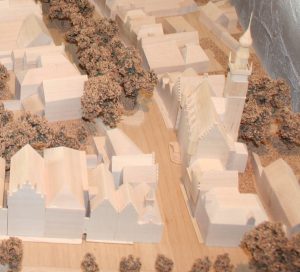
To the buildings around the project, which are made as solid blocks, I always add more details than most other model makers. Dormers, chimneys or canopies for example. These are the kind of details, that make the model a lot more lively and its scale better to interpret. On the picture of the maquette of Veere you can see how I have made the stepped gables of the town hall. It makes it look totally different than when I would only have sawed a block with a saddle roof. To make solid blocks, I prefer to work with basswood. The warm, gentle touch and the fine grains of this wood make the solid blocks much less sterile, than if they would have been made of spray-painted polyurethane foam. Not every model maker can or wants to work with wood. First of all, it burns quickly, when it is being sawed or sanded, and secondly you have to work very precisely, because the wood remains uncolored. This means that you can not remove little seams with filler, as you could, when using polyurethane foam, because that material will always be spray-painted later on. With this material (also known as Renshape or Obomodulan), you can save a considerable amount of time, because connections can be made less precise and even small bridges can be made with filler. That is one of the reasons model makers love to work with it, the other is that it can be sawed and sanded quickly and easily.
Designing
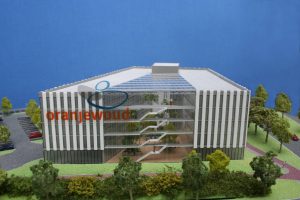
When I was working as an model maker for T+T Design, I often made models in the preliminary stage of a design, which could not be too sketchy and sloppy, because they were going to be used for commercial purposes. I was given quite a lot of creative freedom and was able to develop my design skills to a higher level. If a design is still in an initial stage, there is a big chance, that it will hide some errors. For example, floorplans, that don't entirely match the cross-sections or impressions, that paint a rose-tinted picture, bearing little relation to reality. While trying to make a 3D model of it, a preliminary design can suddenly start to show some Escherian features and flaws will come to the surface, which were certainly not visible at first glance. As a result, you often have to use your own imagination and design skills, to get a good result or to be able to make a model anyway. It is a search for the right balance between colors, materials, structures and shapes to achieve a nice, harmonious model, that most people (perhaps more unconsciously than consciously) will find attractive. More than once, the models that I made in this stage of a project, were decisive during a presentation or in a competition. Now that I am self-employed, I still use these skills for projects, that are still in the preliminary design stage. For example in the project on the right, I put some plants and art in the atrium and added trussed beams to the transparent roof. After doing this the atrium became a real eye-catcher, making the whole building appear less boring.
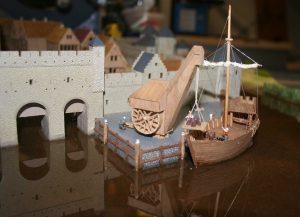
Recently, I have also used my design skills for a couple of museum models. The client in question had no design or other information available, only a theme in his mind and four empty showcases that had to be filled. He wanted to show the development of urban design throughout the ages, but left much to my creativity, meaning, that I also had to make the design and do the historical research as well. Scale 1: 160 was found to be the best compromise between the dimensions of the showcases on the one hand and the purpose of the maquette on the other hand. On this English model scale, lots of thematic figurines and other accessories are available. Unfortunately, not with an historical look, so modern dressed figurines had to be converted into those, that would fit in that particular era. At scale 1:160, they are only 11 mm, so this requires a lot of patience, a steady hand and a very well-developed fine motor skills. I dare to say that most model makers won’t go down that road. For more pictures of my dioramas, see the Photo gallery and keep an eye on my blog, because I intend to put a post about these models there.
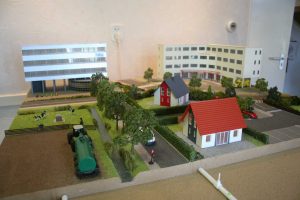
Now and then I get orders from companies that have nothing to do with the construction world, but still want me to build a model, for example to show their product in a particular context at an exhibition or fair. They are often rejected by other model builders, due to the vague nature of their assignment and the amount of design work that often comes along with it. I think, however, that those are just the best jobs to do, because of the creative freedom you get. For example, a communications agency asked me to make a model for one of their clients, a water management company. The model was used for a trade show and had to show a fictional neighborhood with homes, an office building, a hospital and a rural area. A small part of the base had to show the underground water pipelines and there were several color LED lights to be lit in the maquette.
Restoration of models from other model makers
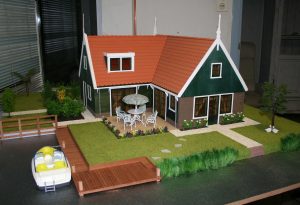
When I was still working as an employee, I sometimes had the opportunity to get a sneak peek in the studios of various model makers. In this way I got introduced to the different styles and techniques of model building. The knowledge I gained with these visits (even though I have developed my own style over the years) has proven to be extremely helpful in restoring old maquettes, made by unknown model makers or those that are no longer active. Another talent of mine that is very useful here is that I can copy colors very well. I know which colors to mix to get a certain coloration.
On the picture, the house was made by another (unknown) model maker and was refurbished by me. I made a completely new base, for which there were no drawings available, so the garden design is also from my hand.
Quality versus time and budget
Of course factors, like time and the client’s budget play a role, but unlike a lot of other model making studios, Minitec won’t take them as a starting point to determine the appearance and the abstraction level. The goal of the model is always the underlying factor, when it is being made by Minitec and it is this factor, that will determine the abstraction level. As a matter of fact I think these two aspects are inextricably linked, as in modern architecture the design of a building follows from the program of requirements, according to the 'form follows function' principle. A model made for an architect, to judge the spaciousness of his design, can be much rougher and less detailed, than when it will be used commercially by a developer.
I don’t try to save money by using cheap materials or by choosing techniques, that may guarantee a quick fabric, but will devalue the ambiance of the model as well. If the production time and the available budget are too far off from what I think is necessary to make a high quality model, I will tell the client and sometimes even cancel the assignment. Quality is key for me and I think a model is only successful, if a customer reaches his goal with it.
Minitec has over 24 years of experience with model building!
Find out who the person behind Minitec is

